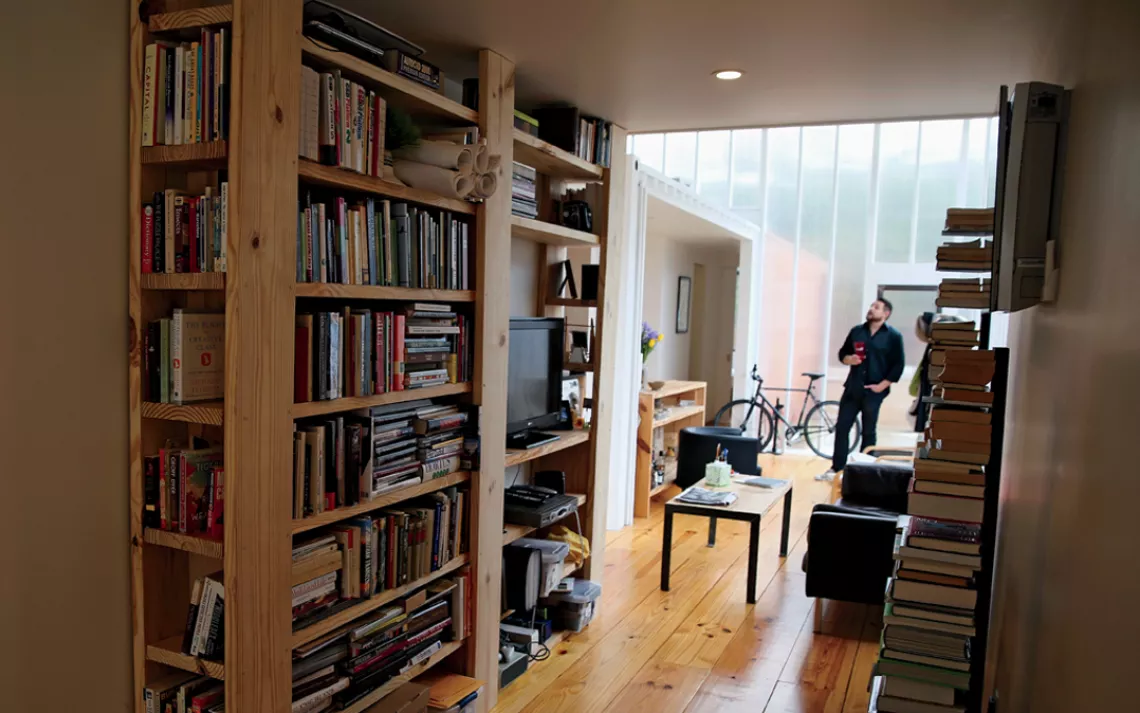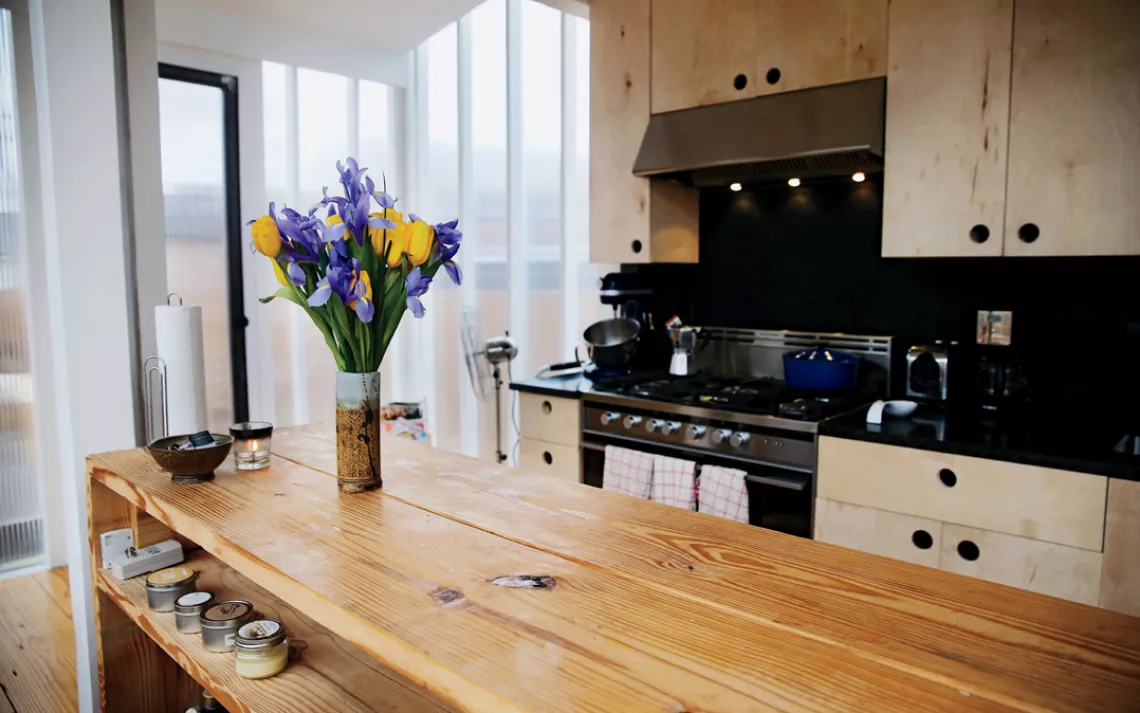From Shipping Container to Cozy New Orleans Home
Photographs by Kathleen Flynn/Times-Picayune/Landov
New Orleans, the sixth-largest port in the nation, is filled with retired shipping containers once used to transport cargo up and down the Mississippi River and around the world. Committed to minimalist living, a landscape architect who teaches at the city's Tulane University and his pastry chef wife "upcycled" a pair of the massive steel boxes to create a 720-square-foot home on their 25-foot-wide sliver of a lot.
"We wanted to have a deliberately small footprint," says Seth Rodewald-Bates, who is also an associate with Spackman Mossop and Michaels, a landscape architecture and urban design firm.
He and Elisabeth Davies began with two four-ton containers, purchased for less than $5,000 each from a shipping terminal five miles downriver, and then connected them with a 220-square-foot addition made from more-traditional materials. The house includes a small bedroom and bathroom, a living area, and an office. Its open layout is just roomy enough for a sofa, five chairs, a kitchen island, two bicycles, a standing fan, bookshelves for 400 books, and a 10-foot desk. "Contemporary space and contemporary consumption don't go together very well, so you have to embrace it," says Rodewald-Bates.
Designed to weather wind, rain, and salt, the sturdy containers remain primed in orange-brown and still sport stenciled numbers once used to identify cargo. Their heavy-handled doors now function as storm shutters. A concrete foundation raised two and a half feet from the sidewalk provides protection from flooding, while permeable gravel in the front yard drains rainwater.
To bring in light and add warmth, the addition was constructed using wood slats, steel cables, and Polygal polycarbonate—an acrylic material that looks like rippled translucent glass. Throughout the house, walls and framework were painted white. Floors and furniture were crafted from Southern yellow pine. Carrara marble graces the bathroom, while granite countertops and a fancy five-burner stove (for Davies) round out the kitchen. Out back, Rodewald-Bates built an appropriately petite plunge pool. "Just because the house is small doesn't mean you have to skimp," he says.
 The Magazine of The Sierra Club
The Magazine of The Sierra Club











